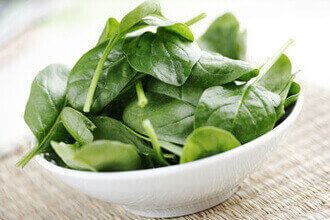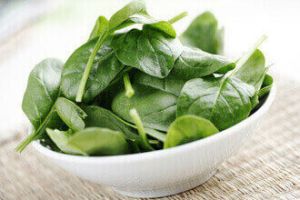
We have talked a lot about how important it is to be in tune not only with what goes into your body but also with what comes out. Urine, for example, can fluctuate in color and odor depending on what you are eating and drinking, how active you are, the time of day or what supplements you are taking. However, urine color and odor can also be an indication of something more serious.
Poop, another result of the digestive process, is also an important indication of health. Your diet has a lot to do with whether or not you have a good poop or a bad poop. Consuming a diet high in processed foods may lead to poor digestion and improper bowel function. Foods made with refined ingredients such as white flour and sugar can cause constipation, and it is best to avoid these completely.
On the flip side, a diet rich in fruits and vegetables supplies the body with vitamins, minerals, antioxidants and dietary fiber which promotes healthy bowel function. Dietary fiber helps the body to break down food and fosters easy elimination of waste products.
Drinking enough water is also essential to good pooping. Consume at least 48 oz. of pure, filtered water each day, more if you are active or outside. Drinking water helps regulate bowel movements and aids in the digestion and assimilation of nutrients.
Stool color
The color of your stool can depend on many different variables. One of the biggest variables is what you have been eating. Dark colored vegetables, such as spinach and kale can turn your poop a dark green color (more on this below).
Beets often turn stool a deep red color. Some medications can make your poop look clay or white-colored. Jet black stools can be attributed to potential bleeding in the intestines.
Although it may simply be the result of taking supplements or going on a black licorice binge, if you see jet black stools, see your doctor immediately to rule out any potentially immediate health problems.
Why eating greens is important
According to the Centers For Disease Control and Prevention, the average American eats fruits and veggies a mere 1.1 times each day and vegetables only 1.6 times daily. This is a far cry from the recommended amount of six to eight servings. And even though these statistics are actually an improvement on previous years, there’s no denying that as a whole we need to eat more produce.
While all produce is important, leafy greens are especially important. Sadly, these are often the least consumed. When you think of leafy greens you may only consider lettuce, although there are a number of different greens that are even more nutritious than lettuce, and tasty too.
Kale
Kale is often referred to as the “Mother of all Greens.” The vitamins, minerals and other nutrients found in kale have powerful antioxidant properties.
Kale contains over 45 different flavonoids, including quercetin and kaempferol. These flavonoids are, like carotenoids, key in guarding against free radicals and lowering inflammation.
Keeping inflammation in check is crucial, because when it reaches chronic levels, it can lead to a number of illnesses, including – but not limited to – asthma, autoimmune conditions such as rheumatoid arthritis and lupus, as well as certain cancers.
The high fiber content of kale, especially raw kale, can help keep your digestive system healthy and regular. A healthy bowel is key to good overall health, as many illnesses are rooted in the gut.
Kale contains some prebiotic properties, helping to keep your number of ‘good’ gut bacteria high, so that they can balance the ‘bad’ gut bacteria, which may lead to illness if left unchecked.
Collards
Collards, a close relative to kale, are another group of leafy greens that deserve to be in the spotlight. One serving of collards has more calcium than a glass of milk. Packed with potent anti-cancer properties, collards are also rich in vitamins K, C, and A.
Collards also contain properties that help to lower bad cholesterol which in turn reduces the risk of heart disease, stroke and other lifestyle illnesses. A popular way to prepare collards is to saute them in olive oil with onion and garlic for about 30 minutes.
Spinach
Another fabulous leafy green to consider is spinach. Spinach is highly versatile and tastes great raw, in smoothies, lightly steamed or sauteed. Spinach is considered one of the most potent superfoods and one of the healthiest vegetables on the planet.
It offers a variety of vitamins and minerals and is especially rich in phytonutrients like carotenoids, beta-carotene, lutein and zeaxanthin. It is known to help battle inflammation as well as oxidative stress. It also helps prevent cancer, is heart healthy and supports good bone health.
Other green vegetables that contain a great deal of chlorophyll such as broccoli, brussel sprouts, sea vegetables and alfalfa are also healthy additions to your diet that may cause your stool to turn green.
The greener the better?
While a green tinted stool may be a good indication that you are consuming a diet high in healthy greens, it can also spell trouble. Obviously, if you don’t eat a lot of greens and your stool is green you may want to do some investigation. Here are several reasons why this deserves some attention:
- Infections caused by the bacterium Salmonella or the parasite Giardia can also cause green stools, however, you will often have diarrhea, cramps and fever with this condition.
- Too much iron in your diet may also color your stool slightly green.
- Synthetic green food dyes found in processed foods such as ice cream, cereal and drinks may alter the color as well.
 Remember, everybody poops! It’s a normal part of human activity. However, your stools can be a barometer of your overall health. By paying attention to your bowel health, you may be able to monitor the onset of potential health problems. For more information on healthy stools visit this article.
Remember, everybody poops! It’s a normal part of human activity. However, your stools can be a barometer of your overall health. By paying attention to your bowel health, you may be able to monitor the onset of potential health problems. For more information on healthy stools visit this article.

